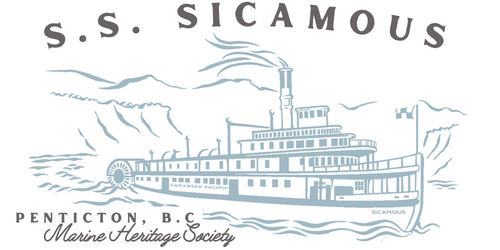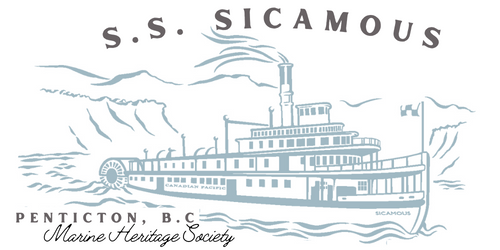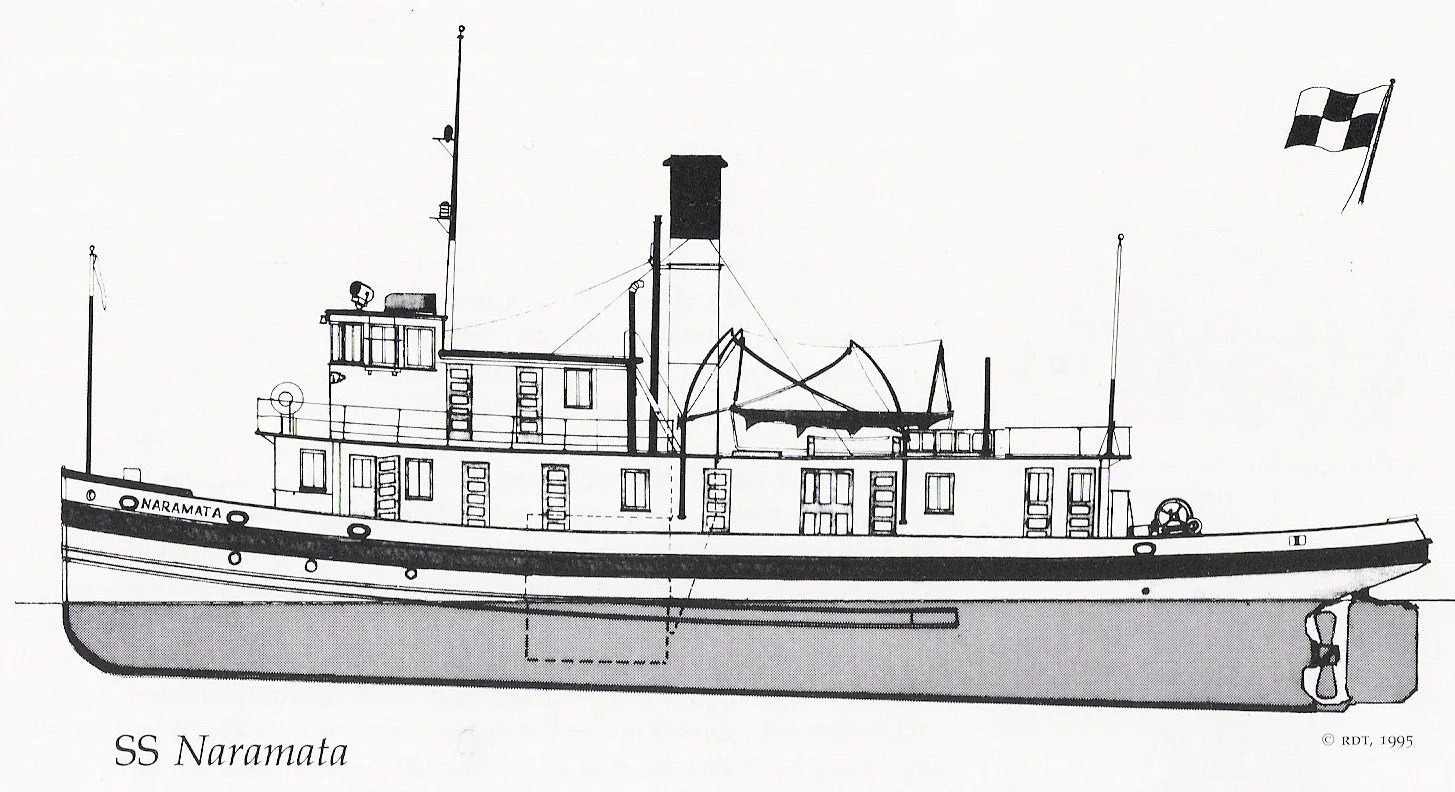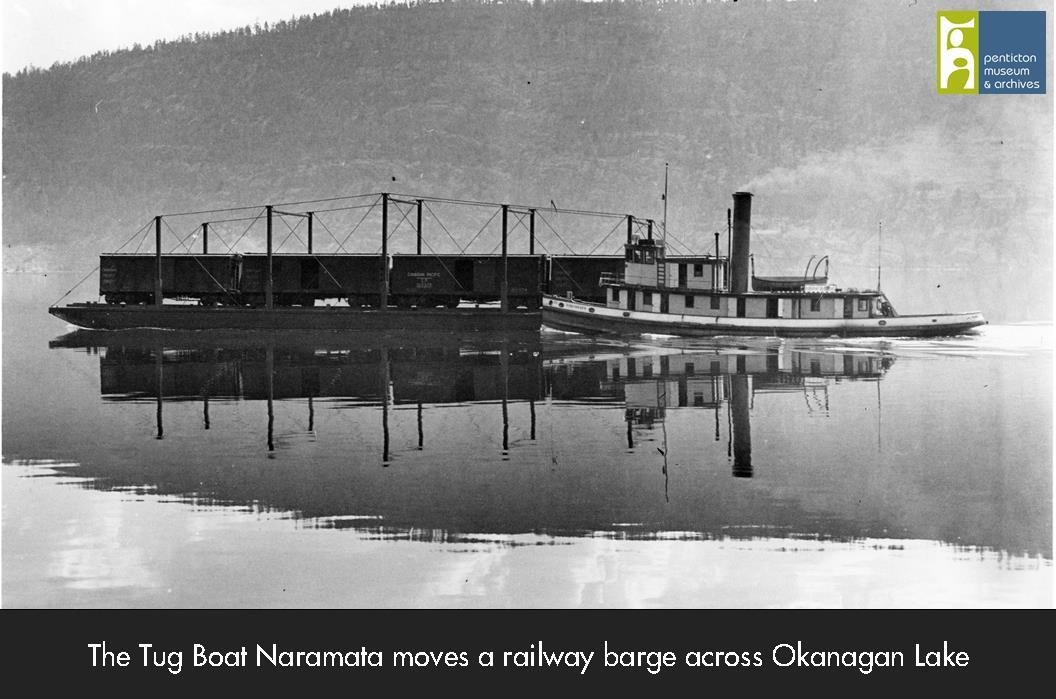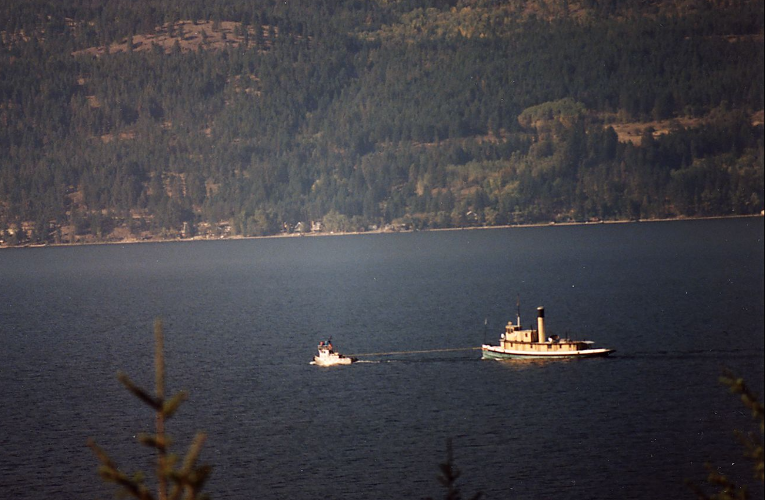
The S.S. Naramata
Preserving Canada's Last Freshwater Steam Tug
The S.S. Sicamous Society is committed to safeguarding the S.S. Naramata tugboat for future generations. Currently, the hull is buried deep in the sand, and we are working to raise the vessel above the water table. This crucial step will prevent water from seeping into the interior, allowing us to better maintain and preserve the steel structure.
This ambitious project requires specialized expertise, and due to its unique nature, we must first conduct a series of preliminary studies to accurately estimate the total costs. We are actively fundraising to support this effort, as without it, the S.S. Naramata faces the risk of irreversible damage. Your support is vital to ensuring the longevity of this historic vessel.
SS Naramata Penticton by Robert Turner
Introduction
The Historical Significance of the S.S. Naramata
Launched in 1914, it is a historic tugboat that played a vital role in supporting British Columbia’s agricultural industry. Serving Okanagan Lake, it towed barges filled with fruit, produce, and other goods from the region’s orchards and farms to market, contributing significantly to the local economy. The Naramata was essential in ensuring that the agricultural bounty of the Okanagan Valley reached distant communities. Retired after decades of service, the S.S. Naramata now stands as a testament to the region’s agricultural heritage, preserved by the Sicamous Society as a symbol of the area’s rich fruit farming history.
About the S.S. Naramata
It was prefabricated in 1913 in Port Arthur (now Thunder Bay) Ontario, along with the S.S. Sicamous, at a cost of $40,000 and assembled at the Okanagan Landing Shipyards. Work began on the ships in September of 1913, with as many as 150 men employed in its construction. Its hull was made entirely of steel, which was unusual for vessels of its size at the time. Launched on April 20, 1914, the tug was named after the fruit-bearing community north of Penticton. The S.S. Naramata served the farmers and communities of Okanagan lake for the next 53 years.
Information about the SS Naramata
Operation and Role in the Fruit Industry
The SS Naramata played a vital role in the Okanagan fruit industry, serving as a tug for barges that transported carloads of fruit from ports such as Summerland, Naramata, and Westbank to railways at Okanagan Landing and Kelowna. At peak seasons, the tug could carry up to 18 railcars of fruit. The tug would often start its journey at 2:30 AM from Naramata, arriving at Okanagan Landing by noon with a load equivalent to a 16-20 car train.
During the winter, the Naramata served as an icebreaker on Okanagan Lake to ensure the safe passage of sternwheelers. The tug typically pushed one or two barges at a time, sometimes positioning itself between them for better maneuverability.
Engine and Boiler Details
The SS Naramata operated with a compound steel twin-cylinder engine, where steam from the first cylinder generated exhaust that powered the second cylinder. The engine measures 12 & 26 x 18 inches and has a single 4-bladed propeller. The engine room, manned by one engineer and two firemen, could reach temperatures of up to 140°F. The engine used water from the lake.
The Naramata was powered by a Scotch Marine Boiler, measuring 10 feet in length and 9 feet in diameter, with an operating pressure of 1103 kPa and a nominal horsepower of 27.3. It was coal-fired, with a maximum speed of 12 miles per hour (19 km/h) and an average speed of 7 miles per hour (11.25 km/h).
Ship Layout and Crew
The hull of the SS Naramata contained sleeping quarters for up to 11 crew members, along with the boiler room, coal bunkers, and engine room. The deckhouse featured a galley with a coal-fired stove, cupboards, and tables, along with amenities such as a toilet, shower, and a dining room where a full-time cook worked. The engineer's cabin was adjacent to the engine room, while the captain and mate’s cabins were located behind the pilothouse on the top deck. The stern provided space for cargo and food supplies for the galley, while the engine and boiler were positioned in the bow.
The crew consisted of a captain, mate (first officer), pilot (during fruit season), two deckhands, chief engineer, second engineer, two firemen, one bargeman, and a cook who also served as steward.
Retirement and Preservation Efforts
With the tug and barge service in decline, CP decommissioned the Naramata in 1967 after the close of the final fruit season. While docked at the Okanagan Landing Shipyards the ship passed through the hands of several commercial owners, including a scout group. Recognizing its historical value, the Kettle Valley Railway Society acquired the tug. It was designated a “heritage vessel” in 1975. In 1991, the SS Naramata was towed south to Penticton, where it was docked at the mouth of the river channel, close to the SS Sicamous
Restoration by the S.S Sicamous Society
Soon after the S.S. Naramata arrived in Penticton, an extensive cleanup began, involving the removal of asbestos, debris, and over three tons of coal from the hull. In 1993, it was discovered that the coal storage areas at the base of the hull were in a severe state of disrepair, likely due to sulfur and ash runoff from the coal. Ash had been stored in a 50-gallon barrel and later dumped into the lake, leaving behind a corrosive residue that contributed to the deterioration. Water began leaking into the hull, raising concerns that the tug might flood and sink. In response, a trench was dug, and the vessel was pushed in and backfilled with sand, stabilizing it until further studies could be conducted.
In 1994, the cathodic protection system, which safeguards the SS Sicamous, was extended to protect the S.S. Naramata's hull, preventing further deterioration. In 1996, the tug was placed under the care of the S.S. Sicamous Society, which continued the restoration efforts. These included exterior painting, pilot house and crew cabin restoration, and window replacements to ensure the vessel remained weather-tight. Restoration work has continued over the years, with only a few rooms still requiring attention.
In 2020, ownership of the tug was officially transferred to the City of Penticton. Current efforts are focused on raising the tug above water level to better protect its steel structure. The SS Naramata will not be returned to the water, as land offers a safer environment for preserving this unique vessel. Despite its grounded status, the tug remains a valuable connection to the past and serves as an educational tool for sharing the history of the Okanagan with the community.
S.S. Naramata Timeline.
1913 – The Naramata is prefabricated in Port Arthur (Thunder Bay) Ontario and moved by rail.
1913 - Construction begins at Okanagan Landing Shipyards. September 1913
1914 – Launched onto Okanagan Lake. April 20, 1914
1967 –Last run of the S.S. Naramata. August 29, 1967.
1969 – Sold by the Canadian Pacific Railway (CPR) to Private owners.
1975– Recognized as a designated provincial heritage site by the Province of BC. [Link]
1988 – Study of the hull commissions, dry docking recommended so the hull can be repaired.
1991 – Tug is moved to Penticton. October 1991.
1993 – Hull begins to take on water. A trench is dug, and the ship is pushed in.
1994 - Cathodic protection system is installed to prevent further deterioration.
1996 – the Naramata is purchased by the S.S. Sicamous Society. Restoration is undertaken on the interior of the tug. The hull is patched internally to try and slow the water entering the interior.
2004 – Funding awarded by the Western Economic Development Fund (WED) to restore the interior of the tug.
2006 – S.S. Naramata is listed on the Canadian Historic Register.
2016 – Preliminary research on base hull condition.
2017 – Flood along the waterfront, hull floats partially confirming that the structure is still intact.
2023 – Study commissioned of hull; raising is recommended.
2024 – SS Sicamous Society is investigating options for raising the tugboat (click below to learn more)
Preserving the Legacy: Why the S.S. Naramata and S.S. Sicamous Belong Together
The S.S. Sicamous and S.S. Naramata are sister ships, built and launched within a month of each other, and they serve as complementary pieces of our region's history. While the S.S. Sicamous was primarily a passenger vessel with a relatively short service life, the S.S. Naramata played a vital role in the lives of Okanagan fruit farmers for 67 years. Together, they tell a more complete story of the Okanagan, with the Sicamous highlighting the luxury passenger experience and the Naramata representing the agricultural heritage and everyday lives of the valley’s residents. Preserving both ships ensures that these intertwined narratives remain intact, offering a richer understanding of the region’s history.
The SS Naramata on its way to a new home in Penticton, beside the SS Sicamous Stern Wheeler, Penticton. (1991)
